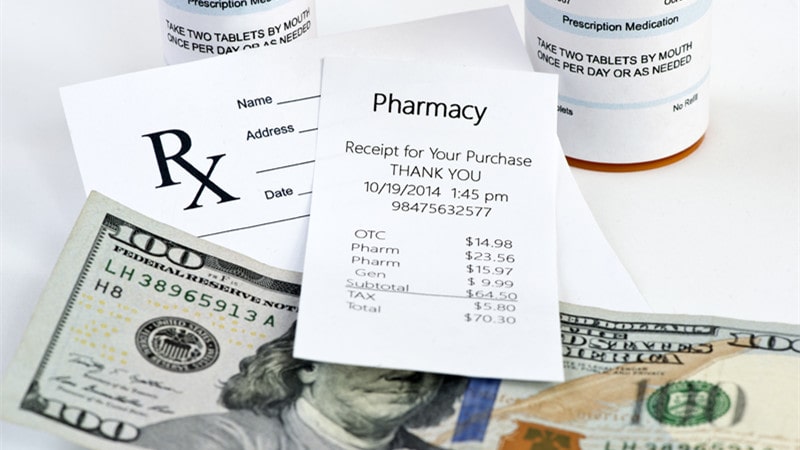When a person’s total prescription expenditures exceed a predetermined threshold, there is a gap in their Medicare Part D coverage known as the “coverage gap” or “Donut Hole.” The beneficiary is responsible for covering all of their medication expenditures during this time and is not qualified for further Medicare help. The donut hole can be challenging and expensive for many Medicare recipients who must pay out-of-pocket for their drugs. Fortunately, several tactics can be applied to lessen or completely prevent the doughnut hole. Here are a few ideas:
1. Buy Generic Prescriptions
Purchasing generic prescription drugs is among the simplest ways to stay out of the Medicare Part D Donut Hole. Prescriptions for generic drugs are typically far less expensive and equally effective than those for brand-name drugs. A person may avoid falling into the “donut hole” because of the significant expense savings. Nevertheless, it is essential to remember that generic drugs may not cover all medications. Also, a specific Part D plan might not pay for a drug’s generic equivalent. As a result, it’s imperative to consult the plan before buying a generic medication.
2. Use Mail-Order Pharmacies and in Advance
Using mail-order pharmacies and placing advance medicine orders is another strategy to get around the Medicare Part D Donut Hole. Drug prices can be kept down by mail-order pharmacies, which frequently charge less than retail pharmacies.
Furthermore, obtaining prescription prescriptions in advance helps stretch out the cost over a more extended period, keeping a person out of the doughnut hole. Nevertheless, it is essential to remember that mail-order pharmacies might only be accessible in specific regions and that prescriptions might take longer.
3. Request discounts from the drug manufacturers
Asking for discounts from the drug manufacturers is another approach to get around the Medicare Part D Donut Hole. Numerous drug companies offer Medicare beneficiaries discounts on a variety of medications.
Although the values vary by manufacturer, they can significantly contribute to low medicine prices. It is essential to keep in mind, nevertheless, that not all prescriptions may qualify for discounts. The values might only be accessible at particular pharmacies or for select medications. To find out if there are any discounts, it is imperative to check with the pharmacy and the medication manufacturer.
Also, Medicare recipients should always ask their physicians if any other deals or coupons might be available. You can use the discounts that some doctors may give you to help keep the cost of your prescription drugs down. Medicare recipients may also ask their neighborhood pharmacy whether deals or coupons are offered for their medicines.
4. Get a New Prescription Drug Plan by Shopping Around
Medicare recipients need to compare different prescription medication plans. It is crucial to compare programs to choose the one that best suits a person’s needs because different plans could provide varying degrees of coverage for other prescriptions. Also, some programs might provide savings or additional incentives that can assist in lowering drug prices. Browsing around can take time, but it may be well worth the effort if it helps you escape the donut hole.
5. Talk to Your Doctor
It is crucial to discuss your prescriptions with your doctor. Your doctor can educate you about generic substitutes or other methods to reduce the cost of your prescriptions. Your doctor can also guide you on how to effectively manage your medications to avoid or reduce the donut hole. For instance, to make pills last longer, your doctor can advise taking smaller medicine doses or dividing them. Discussing your prescriptions with your doctor is an excellent strategy to get the most out of your Medicare coverage and avoid the donut hole.
6. Monitor Your Spending
It’s also crucial to keep an eye on your finances. You can identify when you are nearing the doughnut hole and take steps to avoid it by keeping track of your drug prices. By examining their Explanation of Benefits (EOB) statement, Medicare recipients can determine how much their prescription medications cost. With the Medicare Plan Finder, they can also determine their anticipated annual out-of-pocket expenses. You can avoid the donut hole by watching your spending and using the information to help you choose your meds.
7. Utilize Medicare Programs
Take advantage of any Medicare programs or support that may be offered. This is very crucial. Beneficiaries of Medicare can save money on their prescription drugs through several schemes. They include the Medicare Additional Assistance Program (for help with prescription expenses), the Low-Income Subsidy Program (for help with premiums, deductibles, and co-pays), and the Medicare Savings Program (for help with low-income users’ Part D coverage costs).
The Medicare Open Enrollment Period, which enables beneficiaries to change plans or coverage, Medicare Advantage plans is one program that Medicare beneficiaries can benefit from. The donut hole can be avoided by taking advantage of these initiatives and lowering prescription expenses.
Conclusion
The Medicare Part D Donut Hole can be a difficult and costly period for many Medicare beneficiaries. Fortunately, some strategies can be used to help avoid or minimize the donut hole. These include buying generic prescriptions, using mail-order pharmacies and ordering medications in advance, requesting discounts from drug manufacturers, shopping around for a new prescription drug plan, talking to your doctor about your medications, monitoring your spending, and taking advantage of Medicare programs or assistance. Implementing these strategies can help Medicare beneficiaries save money and avoid the donut hole.




